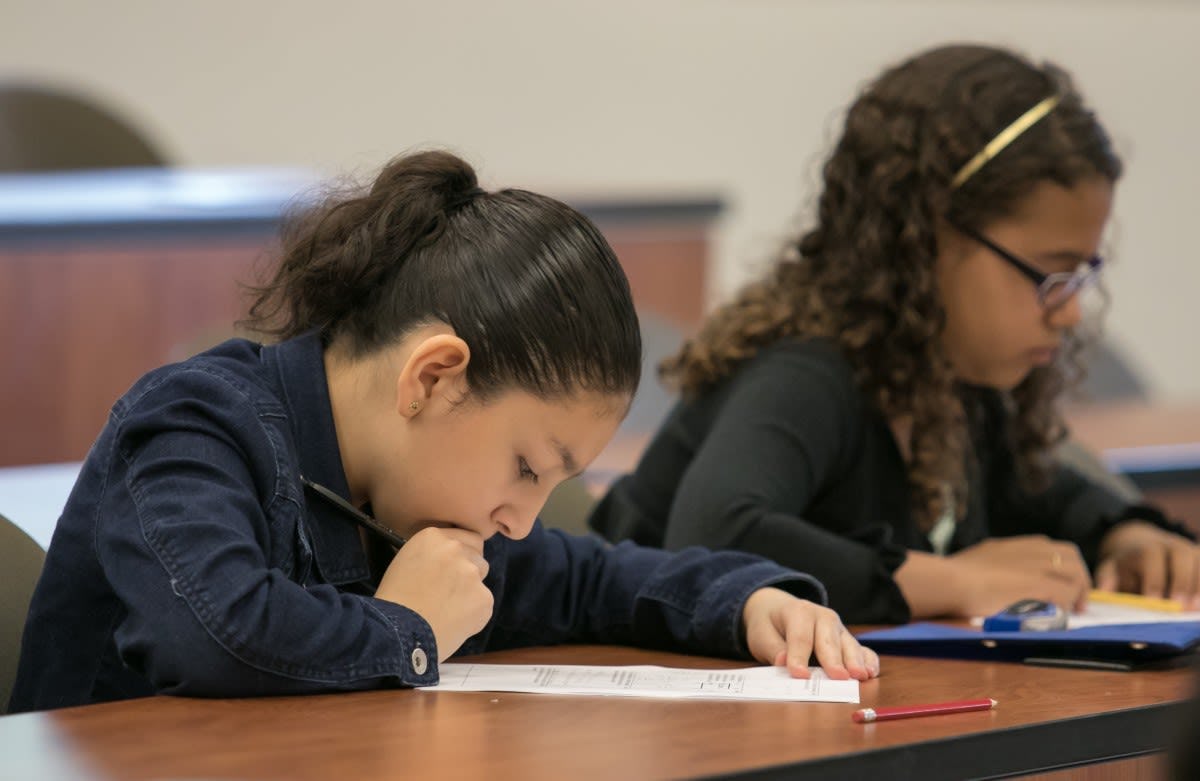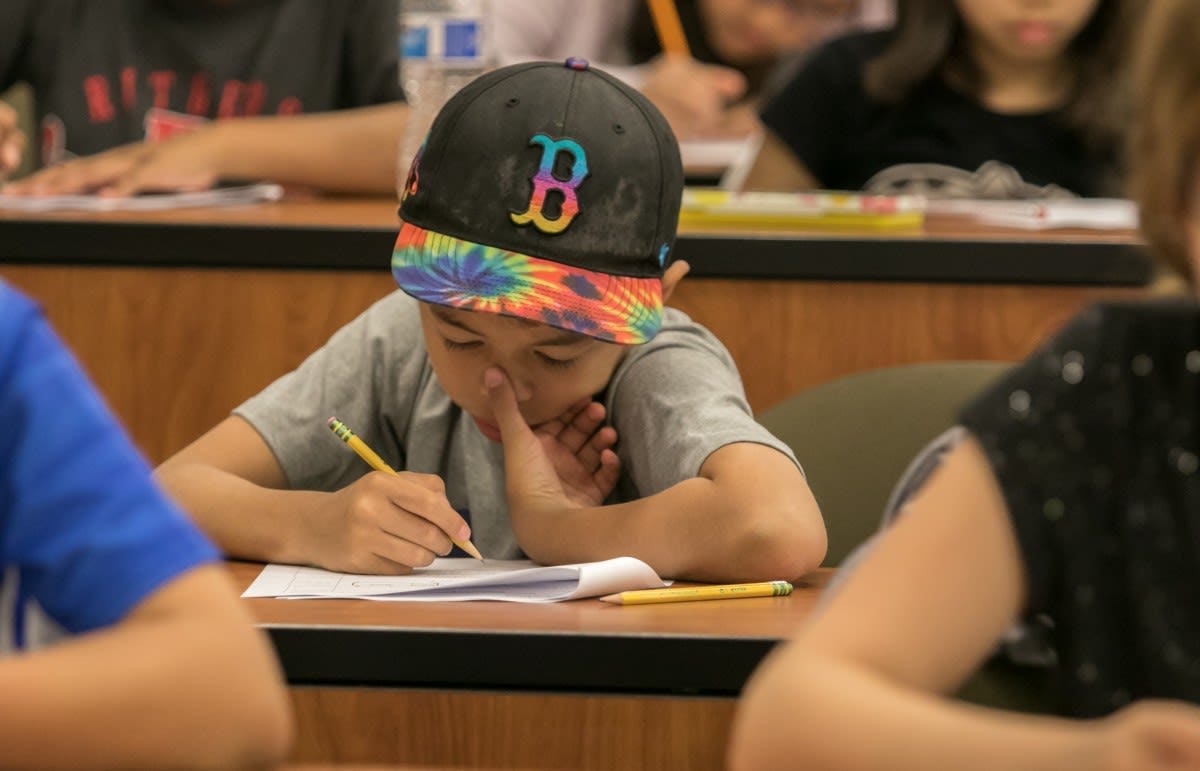With two math circles in Hoboken elementary schools, Stevens is building on local students' love of math
Hoboken kids want to learn math. Stevens wants to teach them.
"These are our neighbors," says award-winning teaching assistant professor Jan Cannizzo. "We want to reach out."
Building on the interest generated by the previous Math Olympiad competitions, Stevens Institute of Technology is continuing its math outreach in the local community—and, hopefully, beyond.
"The Department of Mathematical Sciences at Stevens is excited to work with local schools," says Cannizzo. "The overwhelming interest in the Olympiad encouraged us to continue math outreach opportunities," he says, speaking to both the turnout of this year’s Olympiad and its mammoth waiting list. "We also just want to spread excitement about math. So if we can organize something like a math circle, why not?"
Math circles are meetings between mathematicians, students and teachers where students solve age-appropriate math problems through games, stories, and hands-on activities. Math circles expand upon the ideas of the Stevens Math Olympiad, which are to introduce important mathematical concepts, strengthen mathematical intuition and to stimulate enthusiasm, creativity and ingenuity.
Math circles are also a perfect next step for engaging Hoboken students’ love for mathematics. So Stevens faculty members Cannizzo, Andrey Nikolaev and Pavel Dubovsky reached out to Christopher Della Fave, director of innovative programs for Hoboken’s public schools, to create some. The result was two math circles—one at Wallace Elementary School and one at Salvatore Calabro Primary School. The circles engage students in grades three through six and meet twice a week.
"Hoboken public school district officials were very enthusiastic and eager to collaborate," says Nikolaev, "accommodating our initiative within an existing after-school enrichment program."
Hoboken students working on math problems in a classroom.
Stevens designed all the content, including activities and games. "It was a challenge for us to design age-appropriate content," says Cannizzo. "We designed content for two different levels, grades three through four and grades five through six. We looked at Common Core standards to see what kids should know."
Stevens also worked with the elementary school teachers to make sure the math circles were effective—how the content should be used, how to run the circles, how to communicate the themes and challenges of each problem. Stevens even sent students and professors to help. Professors Cannizzo, Nikolaev and Dubovsky facilitated circles. So did undergraduate students Stephanie Roberson and Mathew Seedhom, and graduate students Utkarsh Agrawal, Rohit Desai and Nishchay Sinha.
"We enlisted the help of several Stevens students, who assist school teachers in running math circles in the classroom," says Nikolaev. "They have been crucial to our effort and a delight to work with."
That help paid off, as Cannizzo learned on his visit: "The first week, I was concerned the problems were going to be too challenging, but we found the level [of content] was appropriate if someone was there to help them think through it."
Hoboken students working on math problems in a classroom.
Helping students think through math problems is important. Not because the problems are complicated, but because students aren’t used to thinking of math that way.
"Students aren’t used to thinking about math as something that can be fun or interesting in its own right," Cannizzo says. "They think math is something you need to get through, that it’s dry and all about doing exercises over and over again. We want to pick away at that thinking and expose kids to more interesting ideas in math."
"We make it clear to the students that these problems aren’t something they’re going to be tested about," Cannizzo continues. "Removing that barrier of "Is this going to be on the test?" is a big help. Once we get past that, and the students realize that the problems are just for their enjoyment, they do the math because it’s interesting to them. That’s the hope."
The math circles will run from the week of September 18 and through the rest of school year, culminating in the next Stevens Math Olympiad in May. Stevens is hoping to expand the math circles to other schools by them, including both local ones and ones in New York City, and has applied for a grant to do just that. Interested school teachers should contact Jan Cannizzo at [email protected].




